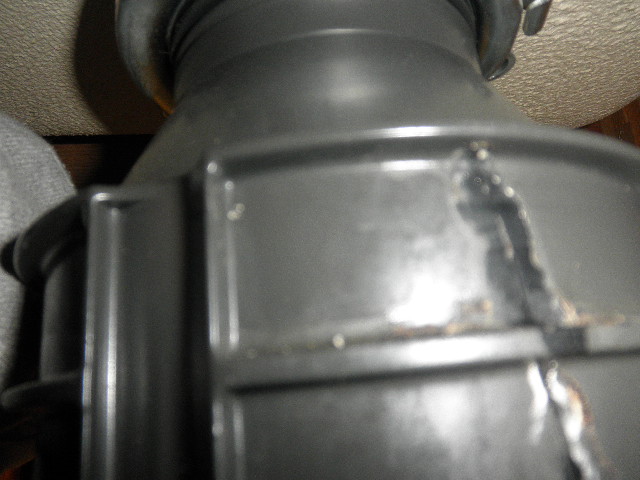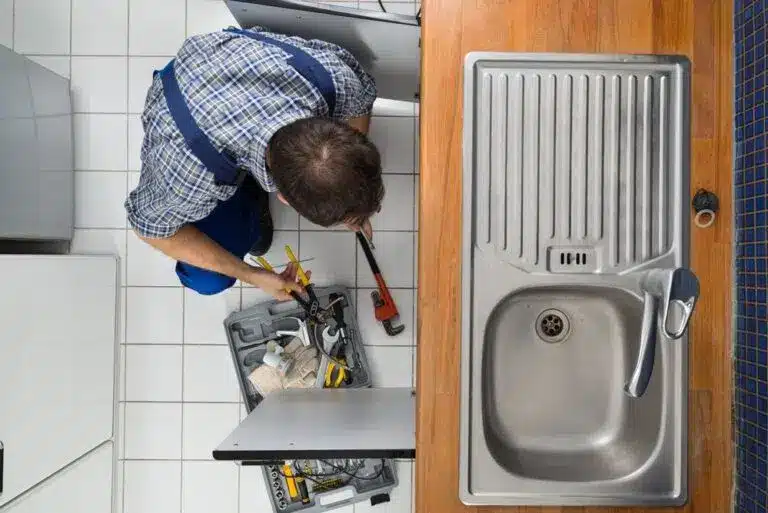Helpful Methods for Fixing a Dripping Garbage Disposal
Helpful Methods for Fixing a Dripping Garbage Disposal
Blog Article
The article listed below about Tips on Fixing a Leaking Garbage Disposal is exceedingly attention-grabbing. You should investigate for yourself.

Waste disposal unit are necessary cooking area appliances that aid in throwing away food waste successfully. Nonetheless, a leaking waste disposal unit can be a frustrating and unpleasant trouble to manage. The good news is, numerous leaks can be fixed easily with a few simple steps. In this short article, we will review exactly how to fix a dripping garbage disposal efficiently.
Introduction
Garbage disposals are set up under kitchen area sinks and are designed to shred food waste right into smaller items, enabling it to pass through the pipes system conveniently. While these devices are usually dependable, leakages can take place with time as a result of wear and tear, loosened connections, or damage to the device.
Step-by-Step Guide to Fixing a Leaking Garbage Disposal
Turn Off the Power
Prior to trying any type of repair services, make certain that the power to the waste disposal unit unit is turned off to avoid the threat of electric shock.
Locate the Leakage
Identify the precise place of the leakage and establish the cause
Tighten up Connections
Use a wrench to tighten up any kind of loosened connections between the disposal device and the plumbing system.
Change Seals or Gaskets
If the leakage is because of used seals or gaskets, eliminate the old components and replace them with brand-new ones.
Patching Fractures or Openings
For fractures or holes in the disposal unit, usage epoxy or an ideal patching product to seal the damaged area.
Recognizing the Source of the Leak
Before attempting to repair a leaking waste disposal unit, it is important to identify the source of the leakage. This can normally be done with aesthetic inspection or by carrying out basic examinations.
Visual Examination
Evaluate the waste disposal unit unit meticulously for any signs of water leakage. Pay very close attention to areas around seals, gaskets, and link factors.
Checking for Leaks
One means to evaluate for leaks is by running water through the disposal device and looking for any kind of visible indications of leak.
Typical Causes of Leaks in Waste Disposals
Worn Seals and Gaskets
Seals and gaskets play an important function in stopping water from dripping out of the waste disposal unit. Over time, these elements can weaken, leading to leaks around the disposal unit.
Loose Links
The connections between the waste disposal unit and the pipes system can become loose over time, causing water to leakage out during procedure.
Splits or Holes in the Disposal System
Physical damages to the waste disposal unit, such as splits or holes in the housing, can also lead to leakages.
Devices and Materials Needed for Repairing a Leaking Garbage Disposal
Before beginning the repair procedure, gather the required tools and products, consisting of a screwdriver, flexible wrench, plumbing technician's putty, replacement seals or gaskets, and epoxy or patching material for fixing fractures or openings.
Checking the Waste Disposal Unit After Repair Work
When the repair service is complete, check the garbage disposal by running water through it to guarantee that the leakage has actually been dealt with.
Preventive Upkeep Tips to Prevent Future Leaks
To prevent future leaks, it is important to do routine upkeep on your waste disposal unit. This consists of maintaining it clean, avoiding placing non-food things or difficult items down the disposal, and periodically looking for leaks or other issues.
Verdict
To conclude, dealing with a dripping garbage disposal is a reasonably uncomplicated procedure that can be finished with basic devices and products. By complying with the actions laid out in this write-up and practicing precautionary maintenance, you can maintain your waste disposal unit in good working problem and stay clear of expensive repair work in the future.
What to Do About a Leaking Garbage Disposal
A leaking garbage disposal often goes unnoticed until you confront a sopping cabinet, a foul-smelling puddle, or an audible drip-drip-drip from the unit. The fix can be frustrating, too, because the leak can stem from a number of components in the system. Fortunately, with a little sleuthing, you can zero in on the leak and—depending on the exact location—stop the icky oozing and repair the component that caused it. Worst case scenario, if it turns out that the garbage disposal must be replaced, installing a new one is a reasonable do-it-yourself task for those with basic plumbing skills. Read on to keep the cash you’d otherwise hand over to a pro.
Prepare to find the leak
Prior to testing the garbage disposal for leaks, unplug it at the wall outlet and turn off the power from the breaker box to prevent electrical shock. Then insert a watertight sink stopper into your sink drain and wipe the unit dry with a clean cloth. In any handy container, mix a few drops of food coloring into a few cups of water, and pour the dyed water onto the sink stopper to help you locate the leak.
Investigate the source
the top, where the disposal meets the sink drain the side, where the dishwasher hose or main drain pipe connects to the disposal or the bottom of the unit Inspect each of these locations while gliding a light-colored rag over the unit; the dyed water will readily show on the rag and reveal the location of the leak. If a leak isn’t immediately apparent, remove the sink stopper and pour a few more cups of dyed water down the sink drain, then check for leaks again. Leaks near the top of the unit are more likely to show themselves while the sink is plugged, while side and bottom leaks are more noticeable while the sink is unplugged.
The metal sink flange that sits directly inside the sink drain is typically sealed around the top with plumber’s putty (a clay-like sealant) and then secured from under the sink with bolts. If the plumber’s putty deteriorates, or the bolts loosen, the flange can no longer form a watertight seal between the sink drain and the disposal—which could cause a leak at the top of the unit.
To reseal the leaky flange, you must first detach the garbage disposal. Start by loosening the screws securing the main drain pipe to the disposal, then loosen the screws in the metal clamp securing the dishwasher hose to the disposal and detach the drain pipe and dishwasher hose from the disposal. Loosen the screws in the mounting ring that connects the disposal to the metal mounting assembly beneath the sink, then pull down the disposal and carefully set it on a clean, dry surface. Loosen the bolts in the mounting assembly with a wrench, then pull down the mounting assembly and set it near the disposal.

I hope you liked our article on How to fix a pretty consistent leak from my garbage disposal. Thanks a lot for taking time to browse our article. If you enjoyed reading our post please make sure you remember to pass it around. Thanks for your time. Visit us again soon.
Call Today Report this page